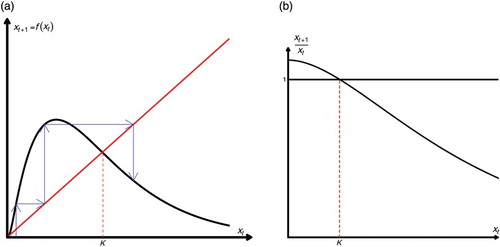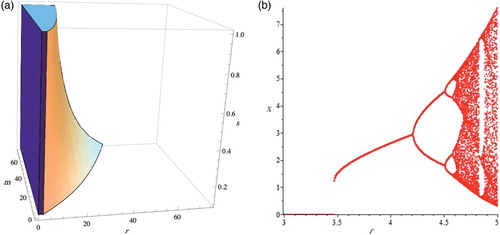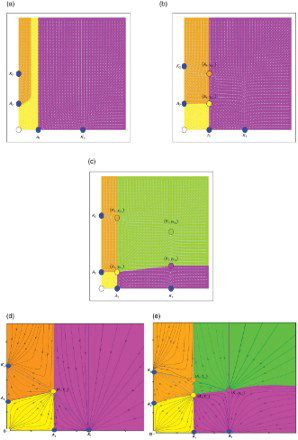Figures & data
Figure 1. A single-species model with no Allee effect. (a) We plot xt+1=f(xt). There are two fixed points: and
(the carrying capacity) and (b) we plot the ‘overall’ fitness function xt+1/xt versus xt. Notice that when xt=K, the fitness function is equal to 1. Moreover, xt+1/xt>1.

Figure 2. A single-species model with Allee effect. (a) We plot xt+1=f(xt). We have two possible fixed points: A (threshold Allee point) and K (carrying capacity). If the population falls below the value of A, it will go extinct and (b) we plot the ‘overall’ fitness function xt+1/xt. Notice that xt+1/xt|x=0=1 which is the hallmark of the strong Allee effect.



